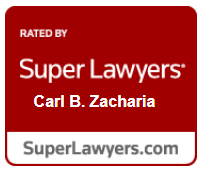The phrase “life estate” often comes up in discussions of estate and Medicaid planning, However, when we meet with individuals who ask us about this planning method, they are often unaware of how it works. Since there are both pros and cons in utilizing this type of planning, it is important to take a closer look at what life estates are all about!
A life estate is a form of joint ownership that allows one person to remain in a house until his or her death, when it passes to the other owner. Life estates can be used to avoid probate and to give a house to children without giving up the ability to live in it. They also can play an important role in Medicaid planning.
In a life estate, two or more people each have an ownership interest in a property, but for different periods of time. The person holding the life estate — the life tenant — possesses the property during his or her life. The other owner — the remainderman — has a current ownership interest but cannot take possession until the death of the life estate holder. The life tenant has full control of the property during his or her lifetime and has the legal responsibility to maintain the property as well as the right to use it, rent it out, and make improvements to it.
When the life tenant dies, the house will not go through probate, since at the life tenant’s death the ownership will pass automatically to the holders of the remainder interest. Because the property is not included in the life tenant’s probate estate, it can avoid Medicaid estate recovery in states that have not expanded the definition of estate recovery to include non-probate assets. Even if the state does place a lien on the property to recoup Medicaid costs, the lien will be for the value of the life estate, not the full value of the property.
One drawback to using a life estate as a Medicaid Planning tool is that the life tenant cannot sell or mortgage the property without the agreement of the remaindermen. In addition, if the property is sold, the proceeds are divided up between the life tenant and the remaindermen. The shares are determined based on the life tenant’s age at the time — the older the life tenant, the smaller his or her share and the larger the share of the remaindermen. Lastly, and most important, you need to be aware that transferring your property and retaining a life estate can trigger a Medicaid ineligibility period if you apply for Medicaid within five years of the transfer. Purchasing a life estate should not result in a transfer penalty if you buy a life estate in someone else’s home, pay an appropriate amount for the property and live in the house for more than a year.
The rules regarding Medicaid transfer penalties and estate recovery are extremely complex, so BEFORE you consider any planning strategies, you should contact the experienced attorneys at Zacharia Brown. To find out more about Medicaid and Asset Protection Planning, and if a life estate is the right plan for you, schedule an appointment with an attorney at Zacharia Brown by visiting our website at PittsburghElderLaw.com or by calling 724.942.6200.







